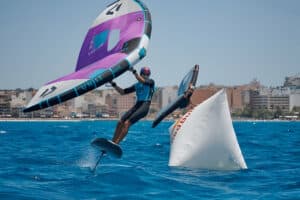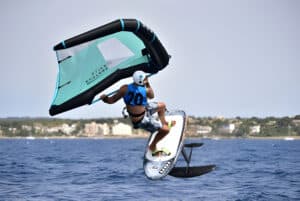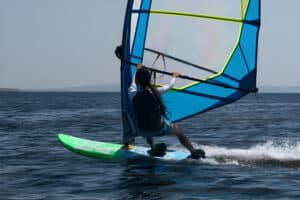Wing surfing and windsurfing are both exhilarating water sports, but wing surfing is generally considered easier to learn and master than windsurfing. This is primarily due to the simpler equipment setup and more intuitive control system of wing surfing.
While windsurfing requires balancing on a board while managing a sail attached to the board, wing surfing allows for more freedom of movement with a handheld wing.
The learning curve for wing surfing is typically shorter, making it more accessible to beginners. However, both sports have their unique challenges and rewards, which we’ll explore in detail throughout this article.
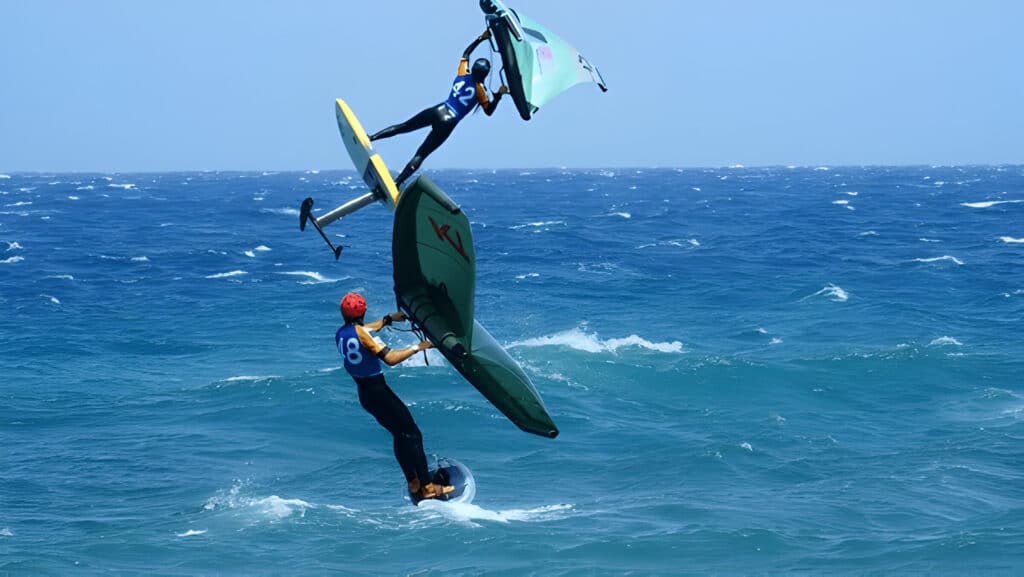
Equipment and Setup
Wing Surfing
Wing surfing, also known as wing foiling, utilizes a handheld inflatable wing and a separate board, resulting in a simpler setup compared to windsurfing. The equipment consists of an inflatable wing, a foil board, and a hydrofoil.
Setting up for wing surfing is considerably faster and less complex than windsurfing. The inflatable wing can be pumped up in minutes, and the foil board requires minimal assembly. This simplicity is one of the main advantages over windsurfing, especially for those new to water sports.
Windsurfing
The windsurf kit typically includes a large-volume beginner windsurf board, windsurf sails, and a mast. The sail is connected to the board via a universal joint, allowing for maneuverability on the water.
Rigging a windsurf sail can be time-consuming and requires some technical knowledge. The process involves assembling the mast, attaching the sail, and adjusting the outhaul and downhaul tensions. Depending on the wind conditions, sailors may need to switch between different windsurf sails, such as a performance freeride windsurf sail for moderate winds or a power wave windsurf sail for stronger conditions.
Learning Curve
Wing Surfing
The learning curve for wing surfing is notably less steep, making it accessible to beginners with minimal prior experience in water sports. Many novices can grasp the basic techniques and achieve their first rides within 1-2 hours of practice.
Windsurfing
Windsurfing presents a more challenging learning curve for beginners. The complexity of managing a windsurf board and rig simultaneously demands a higher level of coordination and technical understanding. Most newcomers to windsurfing require formal lessons and several weeks of practice to achieve a basic level of proficiency.

Wind Range and Conditions
Wing Surfing
The inflatable wing used in this water sport can effectively harness wind speeds ranging from 6 to 14 meters per second (m/s) when using a standard 5 square meter wing. This wide wind range is a significant advantage over traditional windsurfing, allowing enthusiasts to enjoy more time on the water.
Windsurfing
Windsurfing typically requires a more specific set of wind conditions for optimal performance. The ideal wind range for windsurfing is generally narrower, with most riders preferring wind speeds between 10 to 25 knots (5.1 to 12.9 m/s).
Physical Demands
Wing Surfing
Wing surfing is generally considered less physically demanding than traditional windsurfing. The primary reason for this is that the wing is designed to be held up by the wind, reducing the strain on the rider’s upper body.
Windsurfing
Windsurfing typically requires more upper body strength and endurance, particularly when managing the windsurf sails in varying wind conditions. The physical demands of windsurfing are more pronounced, especially in light winds or choppy conditions.
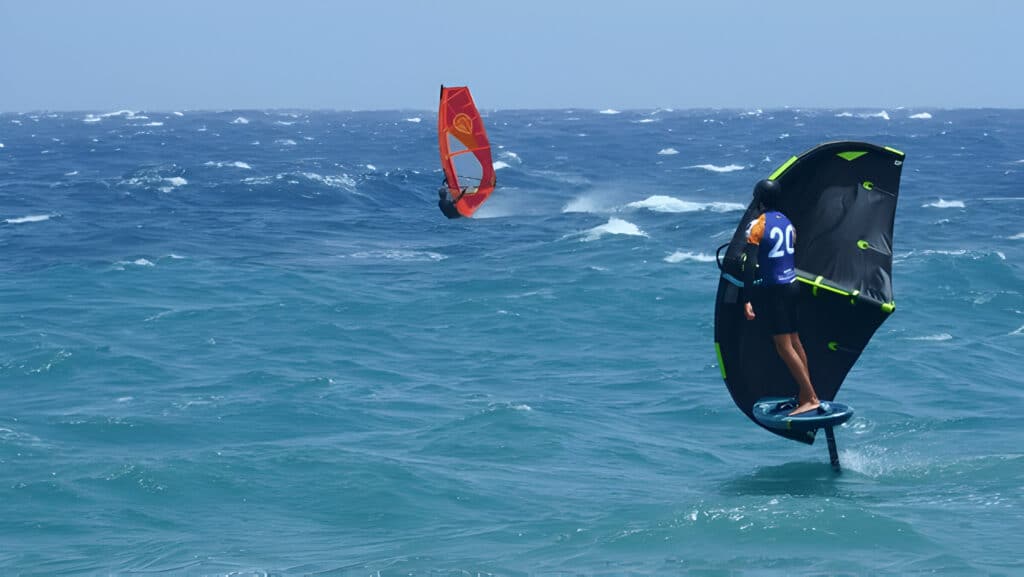
Safety Considerations
Wing Surfing
Wing surfing offers some distinct safety advantages over traditional windsurfing. One of the key differences is the ability to quickly disengage from the power source. In wing surfing, simply letting go of the inflatable wing immediately stops the power, allowing the rider to regain control or avoid potential hazards. This feature is particularly beneficial for beginners or in stronger conditions.
However, wing foiling, a popular variant of wing surfing, introduces some additional risks. The foil board used in this discipline can pose a danger if not managed properly. The sharp edges of the foil can cause injuries if the rider falls onto it or if it comes into contact with other water users. This risk is especially pronounced in shallow water or crowded areas.
Windsurfing
The windsurf rig, consisting of the sail, boom, and mast, is attached to the board. While this provides stability, it also means that the power source remains connected even if the rider falls. In extreme cases, this can lead to the board being pulled away from the rider, potentially creating a dangerous situation.
Windsurfers must develop a good grasp of sail control and safety procedures to navigate various wind speeds and water conditions safely. This includes learning how to properly sheet out (release power from the sail) and techniques for water starting and self-rescue.
Conclusion
In comparing wing surfing and windsurfing, it’s clear that each sport has its unique advantages and challenges. Wing surfing emerges as the easier option for beginners, with a simpler setup, quicker learning curve, and less physical demand. It excels in a wider range of wind conditions and offers faster progression to advanced techniques. Windsurfing, while requiring more initial effort to learn, provides a rewarding experience with its own set of advanced skills and disciplines.
Both sports offer exciting opportunities for water enthusiasts, with wing surfing potentially attracting more newcomers due to its accessibility. Ultimately, the choice between wing surfing and windsurfing depends on personal preferences, physical abilities, and local conditions.
